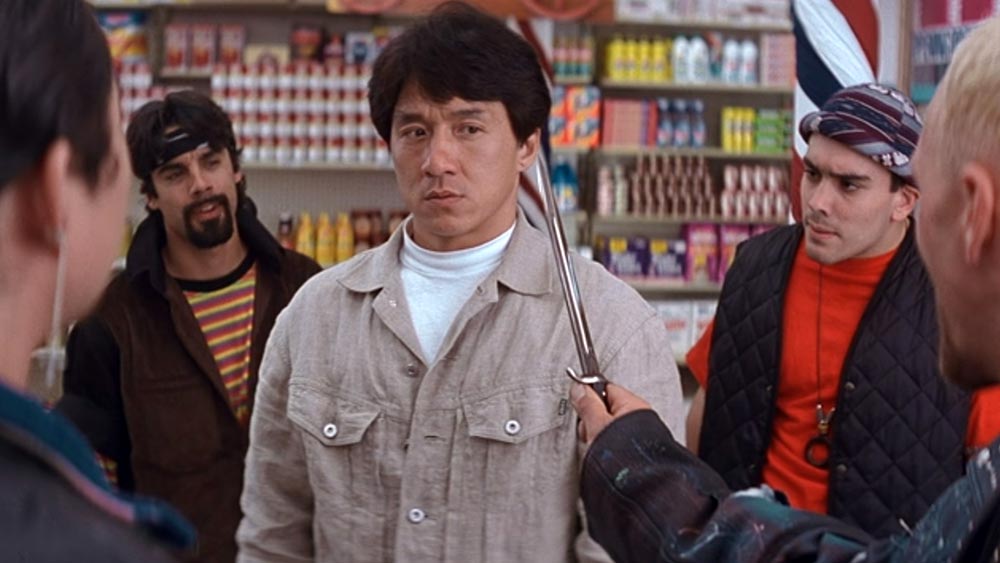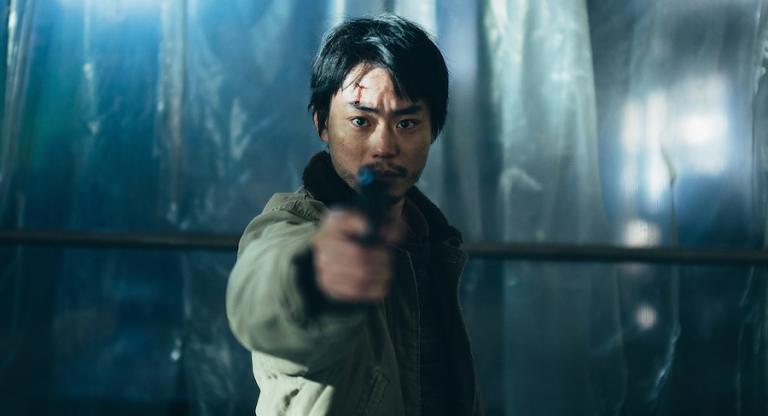New Line Cinema built a marketing campaign around Jackie Chan’s devotion to cinematic masochism when releasing Rumble In the Bronx (1995) both in US theaters and on home video. The theatrical poster read “No Fear. No Stuntman. No Equal.” The video store advert offered a cheeky graphic detailing some of Chan’s many real life injuries on various productions, including Rumble In the Bronx. At this point in the mid-90s, Hollywood action was largely centered around beefy and predominantly white musclemen, all of whom used a cavalry of stunt performers to make them appear larger-than-life onscreen. Though the daring feats custom to Hong Kong moviegoers had started washing up on American shores via video imports and subbed or dubbed grindhouse screenings in major cities during the ‘70s and ‘80s, it was nigh time for someone to pick up where Bruce Lee had left off in the popular domestic cinema’s conscious.
Rumble In the Bronx was not Chan’s first rodeo in New York City. It wasn’t even shot in New York. A decade prior, Chan starred in the grimey exploitation buddy-cop opus The Protector (1985), which was directed by noted trash cinema maven James Glickenhaus. Ten years later, Chan starred in Rumble In the Bronx, an NYC set but Vancouver shot crime film punctuated by sequences of fast-paced yet comical action. This formula eventually became Chan’s trademark both domestically and abroad. But Rumble In the Bronx is much lighter than the X-rated The Protector despite having earned an R-rating from the MPAA. Thin on plot, it’s a fish-out-of-water story featuring Chan’s character coming to New York for his uncle’s wedding only to end up in the midst of a gang war on the gritty streets of The Bronx. Much of Rumble In the Bronx’s runtime is devoted to extended sequences in which Chan dispatches large groups of ridiculously dressed men using household objects with a dexterity that can only be considered superhuman. It’s a resoundingly low stakes affair, a sort of West Side Story for Golden Harvest mainliners, where muscle shirts are heroic attire and pinball machines make for suitable weapons.
Rumble In the Bronx really comes into its own in its last act. Its narrative suddenly becomes inconsequential as something otherworldly takes center stage and the film ditches the graffiti-tagged streets of The Bronx for mountain ranges and golf courses that are meant to be mere minutes from 125th Street in Manhattan. Its largest set-piece and fittingly climactic final sequence features a gigantic hovercraft barreling through a body of water (presumably meant to be the Hudson river) and New York City’s streets while Chan leaps on-and-off of the hovercraft before deflating its air cushion with a sword that looks like it came out of Final Fantasy; as to be expected, he hurt himself in real-life while filming this sequence. Near the end of the film, as Chan sits in the driver seat of a paint-stripped, door-less Lamborghini and speeds down the street toward the hovercraft, which is easily ten times the size of his vehicle, it becomes clear that he is willing to sacrifice his own life for the sake of entertainment. No Fear. No Stuntman. No Equal.
Rumble In the Bronx screens this evening, June 8, at the Museum of the Moving Image on 35mm as part of the series “See It Big at the ‘90s Multiplex.”



